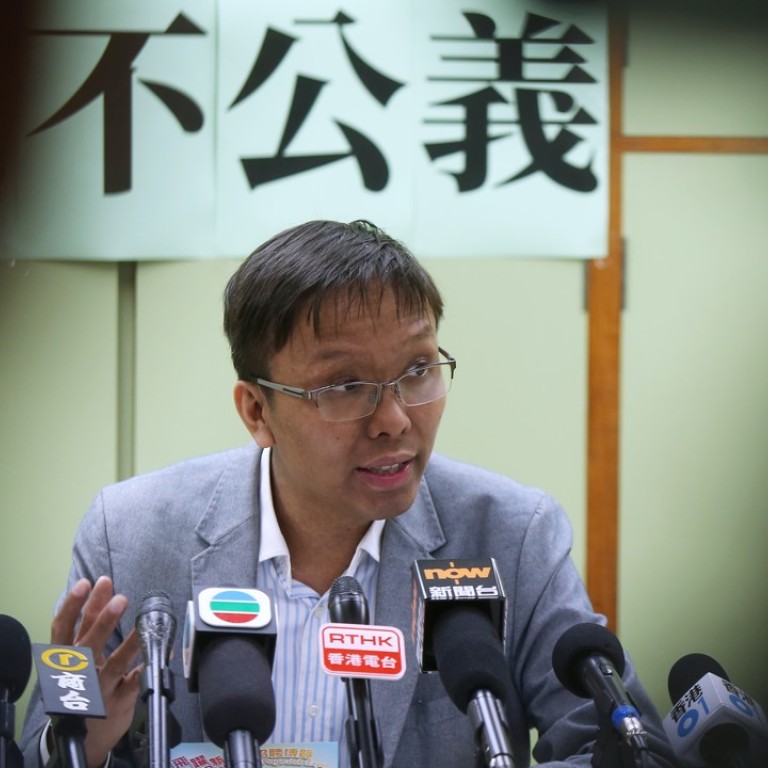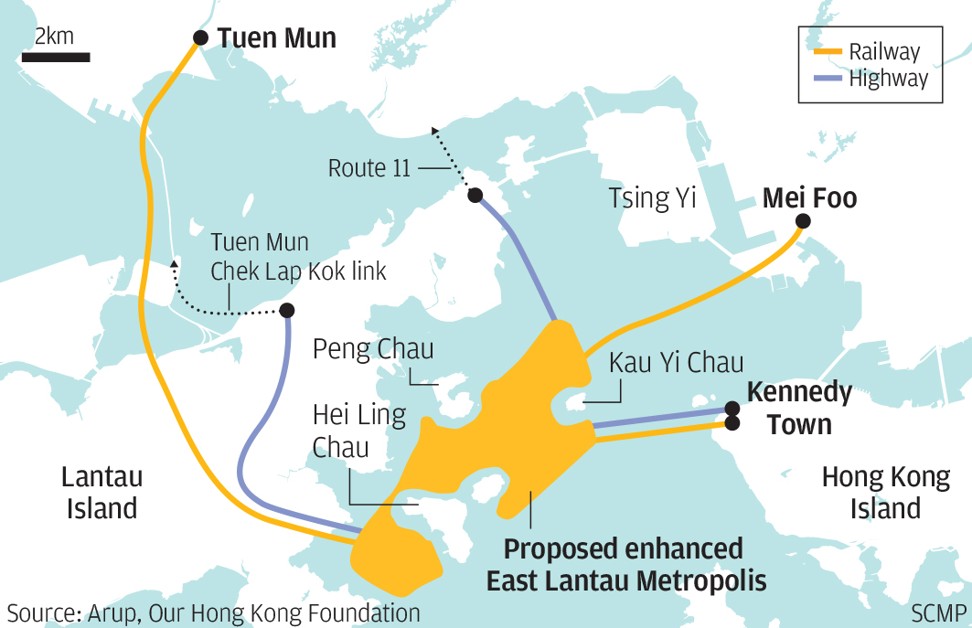
Experts shoot down artificial island proposal for housing 1.1 million Hongkongers, citing costs and environmental concerns
Plan suggested by former Hong Kong leader’s think tank lacks proper understanding of building constraints and impact on wildlife, critics say
An artificial island to solve Hong Kong’s housing problems could fall short of expectations, experts have warned, highlighting several discrepancies in the proposal.
From environmental and cost concerns to time constraints, questions were raised about whether an “ambitious” plan to reclaim 2,200 hectares of land to the east of Lantau Island was as feasible as think tank Our Hong Kong Foundation had claimed.
Half of Hongkongers say public consultation on Lantau Island project ‘inadequate’
Hung Wing-tat, a long-time member of the Chartered Institute of Logistics and Transport, said such a large project would take between 20 and 30 years – much longer than the 14 years the foundation projected – especially with the addition of six new transport routes.
Under the think tank’s suggestion, three railways and three motorways would connect the island to Kennedy Town on Hong Kong Island, Northern Lantau and Tuen Mun in New Territories West.
“The timeline estimated [assumes] the project goes full-speed ahead without any external factors affecting it,” Hung said. “We all know it’s not the construction that takes time, but opposition to such a project, especially if it involves sensitive issues.”
The think tank, founded by former chief executive Tung Chee-hwa, said Hong Kong had delivered an ambitious project on a similar scale in the past, citing Hong Kong International Airport that was built on reclaimed land within eight years.
Hung and another transport expert Leung Kong-yui disagreed.
“The requirements for environmental impact assessments have become stricter [since 1998, when the airport was completed],” said Leung, a former president of the same transport institute. He said he was not against the idea, but it needed further discussion.
Why East Lantau Metropolis is yet another conjuring trick by officials
The artificial island proposed was twice the size of a previous government reclamation proposal – called the East Lantau Metropolis – in its 2030 Plus study, a planning blueprint for Hong Kong beyond that year.
Roy Tam Hoi-pong, chief executive of environmental group Green Sense, said the proposal “seriously underestimated” the cost of building six new transport routes.
Tam said it would likely cost about HK$280 billion, almost double the think tank’s estimation.
Conservationists also expressed reservations about irreversible damage to the marine and natural environment.
The think tank said ecological damage could be minimised by leaving a 200 to 300-metre buffer zone from nearby islands, Hei Ling Chau and Sunshine Island, to avoid affecting the natural habitats of species such as the extremely rare Bogadek’s burrowing lizard.
“The idea that you can just [create buffers] and avoid these islands is not really a solution,” said Dr Michael Lau Wai-neng, a reptile expert.

“Reclamation work can be very disruptive to the surrounding environment and may drive other species [away], disrupting the ecosystem,” he said.
Samantha Lee Mei-wah, WWF-Hong Kong’s conservation manager for oceans, also said the environmental impact information was “misleading”.
Lee said the proposed buffer area had no scientific basis and could disrupt the flow of tidal streams and affect spawning fish, causing a knock-on effect to Hong Kong’s entire marine food chain.
Developing the East Lantau Metropolis is also one of the 18 land options in an ongoing public consultation on how best to tackle the city’s housing and economic needs over the next three decades.
Stanley Wong Yuen-fai, chairman of the government-appointed Task Force on Land Supply, said the larger the size of a reclamation project, the more the public would oppose it, as reclamation was only perceived as feasible if the environmental impact was minimal.



